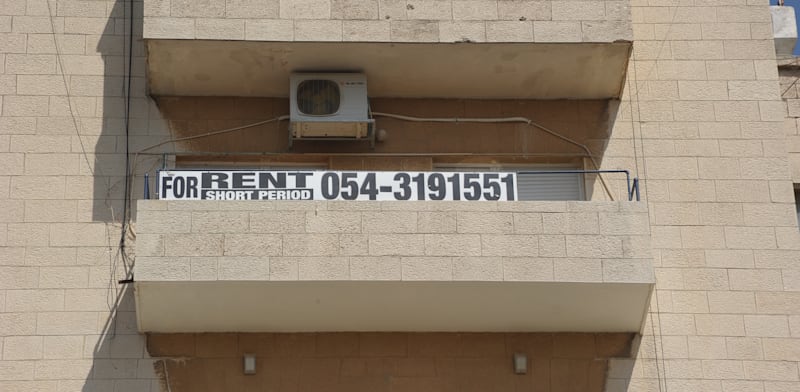If after the release of the Consumer Price Index (CPI) reading for May, which was surprisingly low, it seemed that the rate of inflation was on the way down, the June reading released yesterday now complicates the picture. The monthly rise in the CPI was 0.3%, above most market estimates, which were in the 0.2-0.3% range. The annual rate of inflation in the twelve months to the end of June climbed to 3.3%, further above the top of the Bank of Israel’s 1-3% target range.
Air fares less of a factor
In the past two years, one item has skewed the CPI upwards and downwards time after time, and has been particularly difficult to forecast, namely air fares. The method for calculating this item was changed radically in September 2023, just before the outbreak of war, and since then it has rocked the CPI almost monthly, despite the fact that its weighting in the index is small.
In June, the air fares item rose by only 4.5%, contributing a rise of 0.09% to the general index. In April, air fares rose 15.9%, alone accounting for a rise of almost 0.7% in the general index.
The item responsible for a third of the rise
What then caused the CPI to rise more than expected in June? First and foremost, it was the housing item. This item represents more than a quarter of the general CPI, and mainly reflects changes in rents. It was responsible for almost half last month’s rise in the CPI (0.13%). Unlike volatile air fares, which are very much affected by flight cancellations because of the security situation and by exchange rate fluctuations, the acceleration in rents reflects real trends in supply and demand.
Unlike changes in purchase prices of homes (not part of the general CPI), which are based on registration of actual transactions, the rental component of the CPI is entirely based on surveys. There is no obligation in Israel to report rentals, or any database of real figures.
The housing item has three components: housing services for owner-occupied homes; rents; and other housing expenditure. Since most Israelis live in their own homes, services for owner-occupied homes is the main component.
Homeowners do not pay rent, but part of the housing services component is an estimate of how much they would pay to rent a similar home. This estimate is based on the rents measured in the rentals component.
This is a cause for concern, since the peak is probably still ahead of us. Among other things, this is because of the rise in demand for renting as a result of the destruction caused by Iranian missiles to residential buildings. In commenting on the latest interest rate decision, Governor of the Bank of Israel Amir Yaron referred to this problem, saying, “The damage caused by the missile attacks from Iran is liable to lead to growth in demand for rental homes, and to a rise in rents in the areas affected.”
RELATED ARTICLES
The slowdown in sales of new homes will also tend to raise rents. According to figures released by the Central Bureau of Statistics this week, new homes sales dropped by 23% in March-May this year. The latest survey of the housing market by the chief economist in the Ministry of Finance indicates a similar trend, and finds that May was one of the weakest months for home sales in the past 25 years. Potential buyers are deciding to wait. Perhaps interest rates will fall; perhaps the downward trend in home prices (according to the Central Bureau of Statistics, prices have fallen for three successive months, by an overall 0.6%) will accelerate; and all kinds of other reasons. Meanwhile, these people need places to live, hence the growing upward pressure on rents, which translates into rises in the CPI.
When will interest rates fall?
This is perhaps the main question. The Bank of Israel talks of three interest rate cuts by mid-2026, but hedges that will several conditions that need to be fulfilled. It also expects inflation to moderate despite everything, to 2.6% by the end of the year. This is partly because of the sharp fall in Israel’s risk premium, and the substantial appreciation of the shekel. The focus now switches to the next interest rate decision, due on August 20.
Bank Hapoalim chief financial markets strategist Modi Shafrir says that before the release of the unexpectedly high June CPI reading, the market assigned a 33% probability to an interest rate cut in August. Now, a cut seems more remote, and there is another CPI reading due beforehand that will affect the picture. The governor of the Bank of Israel has made clear more than once that the price of the mistake of cutting interest rates too soon, after which inflation will surge again, is too great. Therefore, in the current situation, in which the inflation rate is above the Bank of Israel’s price stability range, it’s hard to see the interest rate coming down as early as August.
Where’s the good news hiding?
The June CPI reading did provide one piece of good news, relating to the cost of car insurance. According to the Central Bureau of Statistics’ figures, this fell by 1.3% last month, and by nearly 6% in the twelve months to the end of June, after a sharp rise that reached its peak last summer.
Published by Globes, Israel business news – en.globes.co.il – on July 16, 2025.
© Copyright of Globes Publisher Itonut (1983) Ltd., 2025.








